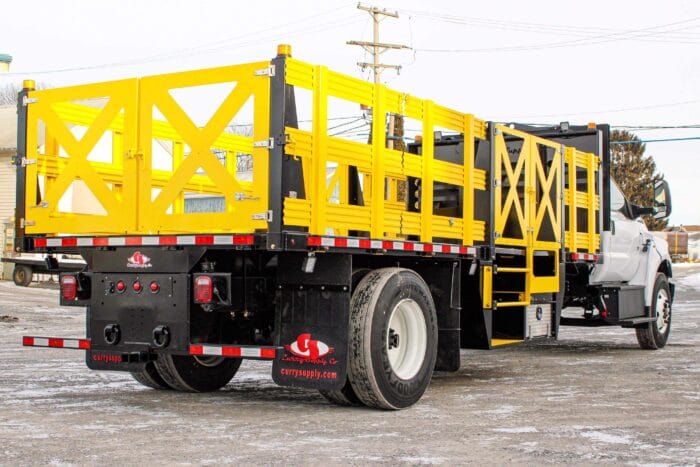Best Practices for Using Traffic Cone Trucks
Everyone knows what traffic cones look like. No surprises there, as they are all over the place, with an estimated 140 million of them being used worldwide. But how often have you thought about who places traffic cones and how they’re placed?
We assume the answer would be quite often only for people in the construction and transportation industries. Workers in roadside work zones use traffic cone trucks on a regular basis to safely deploy and pick up cones.
Unfortunately, cone deployment can be a dangerous procedure, especially in highway work zones, due to the risk of traffic accidents. In this article, you will learn the best general practices for using traffic cone trucks and maximizing highway safety.
How should you use a traffic cone truck?
Regulations governing the use of traffic cone trucks can vary state by state. This means that you should always check local guidelines before deciding how to use a cone truck to protect workers and equipment in a roadside work zone. Nevertheless, there are some general guidelines that you can follow when deciding on how to use a traffic cone truck:
The placement of cone trucks
Traffic cone trucks are used for safe and efficient cone deployment in a variety of roadside situations. When used for work tasks around highways, the workers operating the cone truck need to take appropriate safety precautions to protect themselves and the equipment from vehicle collisions and similar accidents. The placement of cone trucks is essential in this regard:
- The vehicle should be visible to any oncoming motorists.
- The vehicle should be relocated as needed to make the most out of the truck’s arrow panel once the traffic cones are deployed.
- The truck may need to be repositioned to allow for emergency vehicles to pass.
The number of operators
Traffic cone trucks are typically operated by two or three workers: one who operates the vehicle and one or two people who deploy and pick up the traffic cones from a man bucket. This practice helps protect the workers’ safety by allowing the worker operating from the man bucket to deploy cones without being on the road and in harm’s way of moving traffic.
Man buckets
As we’ve mentioned, having a man bucket attached to the side of a cone truck can help ensure the safety of roadside workers. Well-constructed man buckets are convenient and sturdy, which provides the worker with protection while operating on a busy, dangerous road. If you’re looking for a vehicle to add to your fleet, a man bucket is a crucial piece of cone truck equipment to consider.
Visibility
Visibility is key for all vehicles used in highway construction zones. When choosing a traffic cone truck, look for those that have high-visibility reflective tape and accents placed in all critical areas. Your cone truck should also be equipped with an arrow board to help divert traffic away from the vehicle, as well as work lights to improve visibility in poor weather conditions. The arrow board is installed between the cab and chassis not only to provide unobstructed visibility but also for protection when it is not in use.

Browse our sturdy and reliable cone trucks now
At Curry Supply, we offer highly dependable and durable service vehicles to customers across the U.S. and beyond. Our traffic cone trucks, in particular, are designed to maximize safety and visibility in highway construction areas, as well as ensure efficient cone deployment in all weather conditions. With features such as a powder-coated flatbed, double-swing access doors, and sturdy man buckets, our cone trucks bring convenience to the job. Contact us now to learn more.